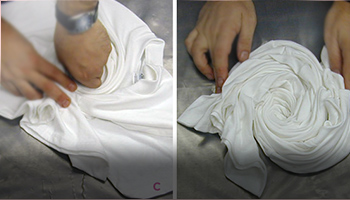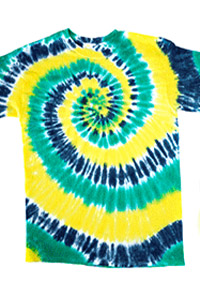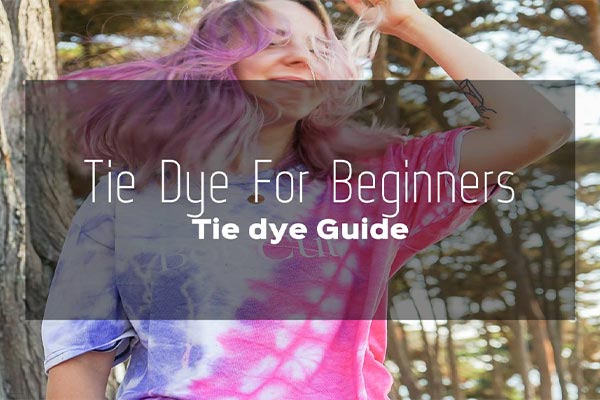Easy tie dye instructions
Tie-dye can be considered part of the batik industry. The very idea of the tie is like tying something up and holding it, and this tie-dye process consists of things like bending and spinning. Applying different colors to an item that has been tied up and retained is simply called a tie-dye. Unlike usual resist dyeing methods, this tie dye is bright and a best tie dye. Many people today are more interested in this art. Different types of dyes are use for this process.
- Fiber reactive dyes (Procion MX)
- Acid dyes
- Vat dyes
- Etc.
Out of these, Procion MX fiber reactive dyes are the most commonly used.
If these procion dyes are use, fabrics such as cotton, hemp, linen, rayon are use for this tie-dye. The procion dye reacts effectively on these cellulose fibres. These dyes are widely use due to their cheapness, Safer than other dyes, Ease to use, etc.
Pros and cons of the Procion dyes
This tie-dye process uses little acid dyes. The dye is use for fabrics such as protein-based fibers, synthetic polyamide fiber, and Nylon.
Silk, wool, feathers –> Protein-based fibers
Vat and indigo dyes are also used for cellulose fibers and silk fabrics. Vat dye slightly insoluble in water. Therefore lye, caustic soda is used to reduce vat dye before dyeing fabrics chemically. Reacts with high PH fibers in procion dye to form a permanent bond. Therefore the cloth is soaked for a few minutes in a liquid containing soda ash or sodium carbonate before Tie dyeing or this soda ash is added directly to the dye.
Acid dye has a low PH value. They form an ionic bond with the fibers.
Tie-dye Techniques (Easy tie dye designs)
| Star Nebula Spiral Shibori Rosette Heart Jack O Lantern Rainbow Ice dye Stripes (sailor, diagonal) Ombre Spider Crumple tie dye String Kaleidoscope | Alien Polka dot Emoji Galaxy Ringer Eyeball Unicorn Sunburst Bullseye Folding Watercolor Chevron Firecracker Candy corn Reverse |
How to Tie Dye step-by-step (how to make tie dye)
This is a brief explanation of “how do you tie dye”. There are many Tie-dye techniques, you have the ability to tie the fabric in different shapes like squares, circular, linear,etc. Or you can create your own design based on your idea.
There are a few basic things about making this Tie dyeing.
And there are several items you can use to tie-dye, such as T-shirts, Shoes, Socks, Shirts, Bedding, Fabrics, Pillows, etc. The fabric used for this must be a fabric such as Cotton, Silk, or Rayon made from natural fiber. If you already have an item (t-shirts, …) to tie-dye with, you do not need to put soda ash in it. But if you use new fabric for this, be sure to soak the cloth in a bowl of water dissolved in soda ash. However, you need to wet your items or fabrics to tie dye.
Prepare dye
You can buy Tie-dye bottles used for tie-dye. This bottle contains dye powder. you have to do is open the tie dye bottle and add water to make the dye. Then shake the bottle well until the dye dissolves well. Be sure to shake the bottle from time to time during and before designing because the dye powder can deposit at the bottom of the bottle.
- If you do not have a tie dye bottle, there is a method to make a dye.
- It is possible to keep this dye for a maximum of 3 days (72 Hrs.) as the dye concentration in this solution decreases. If the design when done after 3 days, it will not look bright.
Bind the Fabric
In this, we will talk about how to tie fabric or items for the tie-dye Spiral technique because the spiral tie dye technique is a beginner tie dye patterns.(easy tie dye)
First, put a polythene or plastic cover on the work surface (to prevent dye leakage and protect from stains).
Now unfold the damp cloth or fabric on the work surface.( this guide-how do you tie dye a shirt). Then grab the cloth right in the middle (Center Point) and twist it in a spiral to one side. Then tie the straps tightly with rubber bands or waterproof ropes so that the shape does not change.

Apply dye
Now place the binding cloth on a dye non-absorbent surface and Pour the dyes through the dye bottles in any number of colors you like. (pour the paints over the entire item). Turn backside the bound item over and apply the dye as before

*Here it is essential to wear gloves.
- The item or fabric must be wet before dying to allow the fabric to absorb the dye well.
Leave the finished item wrapped in a sealed polythene bag, plastic bag, or polythene for 5-10 hours. This time frame varies for a variety of reasons. (This is do to retain moisture)
Rinse & Wash

Take the bound item out of the polythene bag and remove the rubber band tied to it. Now unfold the item and check if the desired pattern is obtained. Then wash it off with detergent and water and let it dry.
Tie-dye kit (Tools for tie-dye)
Tie Dye kits are now available in the market in a variety of sizes and the different purposes and be sure to get a tie dye kit that fits your project out of these. if you are a beginner, there are even made starter kits available.
The following necessary tie-dye tools and equipment are essential before making a tie-dye.
- PPE (Personal protection equipment)
- Easy-squeeze plastic bottle
- Dye powder (if there are no tie dye bottles)
- Soda ash
- Cords that do not absorb water (Rubber bands, twine. Nylon)
- Natural fiber fabrics or item (Cotton, Silk, or Rayon)
- Polythene surface cover (to laying on a table)
- A Sealable polythene bag. Or plastic bag or polythene wrap.
- Washable marker (When needed to draw in different shapes tie dyeing)
- Suppose the dye will make separately, A small bucket or bowl to dissolve it.
- A cup or teaspoon to measure
- Instructional notes




